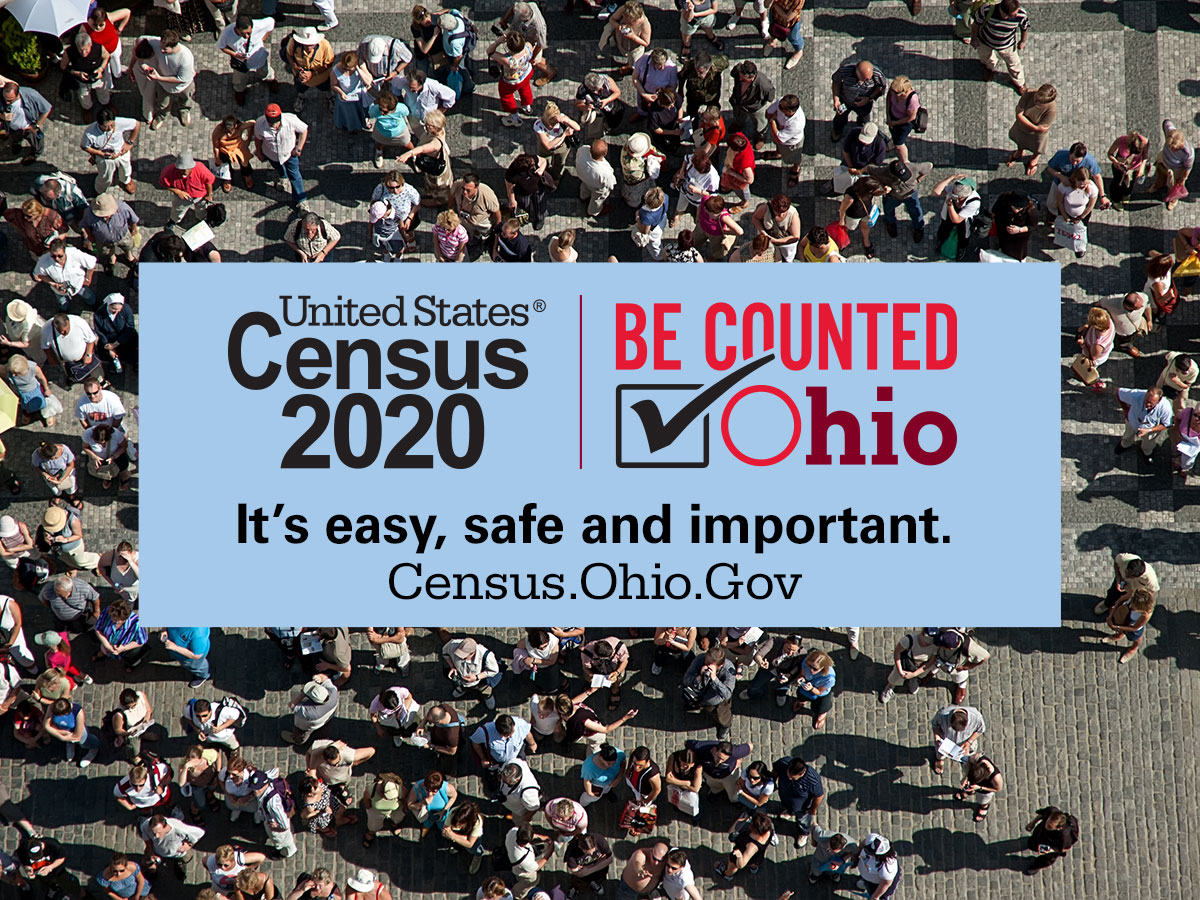Article I, Section 2 of the United States Constitution requires that, every ten years, a count of every person in America be taken. The Founders enshrined the census in our Constitution in order to determine representation in Congress.
The U.S. Constitution requires only that the decennial census be a population count. Since the first census in 1790, however, the need for useful information about the United States’ population and economy became increasingly evident.
The next decennial census will be conducted this year, and the census totals will be used not only to determine how many seats a state will have in the U.S. House of Representatives, but also to allocate taxpayer dollars – more than $675 billion in federal funds annually – fairly and efficiently for both federal programs and for every state nationwide. Each year, Ohio receives roughly $34 billion in federal dollars based on census information. This includes funds for education, health care, housing and transportation.
In addition, census data is an important tool utilized by businesses every day. Employers rely on census data to make critical, data-driven business decisions about potential investments, employees, customers, products and markets. For example, employers use information from the census – such as population density, worker education levels, and transportation – to determine where to locate new facilities. Retailers use information from the census to determine what products to offer on their shelves at each store.
Because many economic and business decisions are based on products benchmarked by the decennial census, achieving an accurate population count is imperative. An inaccurate count may also impact the calculations concerning the unemployment rate, interest rates, inflation rates, exports and other considerations upon which employers rely.
The accuracy of the census is critical for strengthening the economy, and an undercount of Ohioans would jeopardize the validity of data and our share of federal dollars. Unfortunately, there are many hurdles that must be overcome in order to ensure an accurate count.
In particular, there are approximately 1.5 million Ohioans that have been designated by the U.S. Census Bureau as “hard-to-count” populations. These include young children, highly mobile individuals, racial and ethnic minorities, non-English speakers and immigrants, low-income individuals, and individuals who distrust the government. Further, those with unreliable Internet access are at risk of being undercounted because Census 2020 will rely on the Internet as the primary response method.
That’s why the Ohio Chamber of Commerce is just one of a growing group of business and community leaders and organizations from the private and nonprofit sectors working to increase awareness of the Census and reduce the likelihood of undercounts. Our own Vice President of Government Affairs, Keith Lake, was appointed by Gov. Mike DeWine to serve on the 2020 Ohio Complete Count Commission, which was established to develop recommendations and strategies to help get Ohioans counted.
The success of the census depends upon everyone’s participation. Individual businesses have a role to play in helping achieve an accurate 2020 census, as well. In mid-March, homes across the country will begin receiving invitations to complete the 2020 Census. Businesses can begin by encouraging their employees and customers to complete their census questionnaires early.
April 1, 2020 is Census Day. This day is neither the beginning of the census nor a deadline, but a day that is designated to promote the census around the country. Companies can help by participating in local census events and posting messages on social media.
Companies who interact with the hard-to-count populations as employees or customers can play an especially vital role by encouraging them to participate and helping to address their concerns. Businesses can also assist by simply promoting the census in stores and offices, or go a step further and include messages promoting the census on customer receipts and in bills, statements, or other correspondence with customers. Because the 2020 Census is designed to be taken primarily online, businesses can also provide a private common area equipped with computers or tablets and encourage employees to complete their census questionnaires at work.
Many chambers of commerce are leading efforts in their communities to encourage a complete count, and we urge you to connect with your local Complete Count Committee. Lastly, join the National Business Network for an Accurate Census. It is a free, private listserv for businesses and distributes information and provides opportunities to support the census. Learn more at strongnation.org/census.
By the end of the summer, Census 2020 will wrap up (the deadline has been extended to August 14 due to the COVID-19 Pandemic). Population totals will be sent to the president by December 31. Congressional reapportionment will be determined by then, as well.
We need every resident to participate to ensure an accurate count. Please join the Ohio Chamber in this important effort to protect our economy and communities for the next decade.
